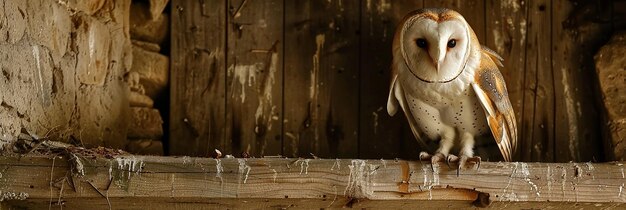Barn owls, scientifically classified as Tyto alba, represent a globally distributed species that has long captivated observers with their distinctive appearance and crepuscular habits. Their prevalence across diverse ecosystems, from rural farmlands to urban fringes, underscores their adaptability and resilience. This exploration delves into the multifaceted aspects of the barn owl, elucidating their morphology, hunting strategies, ecological role, and conservation status.
Physical Characteristics: A Study in Avian Morphology
The barn owl’s physiognomy is immediately recognizable. Their heart-shaped facial disc, a characteristic feature, acts as a parabolic reflector, channeling sound waves towards their asymmetrically placed ear openings. This auditory specialization grants them exceptional precision in locating prey, even in complete darkness. The plumage, typically a mottled combination of buff and grey, provides effective camouflage against tree bark and other natural backgrounds. A key diagnostic trait involves observing their leg feathers, which extend down to their talons.
Nocturnal Predation: A Masterclass in Acoustic Hunting
Barn owls are primarily nocturnal predators, relying heavily on their acute hearing to locate small mammals, particularly rodents. Their hunting technique is characterized by silent flight, achieved through specialized feather structures that minimize turbulence. As they approach their quarry, they use their sharp talons to seize and dispatch it, often swallowing the prey whole. Later, they regurgitate indigestible components like bones and fur in the form of pellets. These pellets provide valuable insights into their diet and the composition of local prey populations. It’s truly remarkable.
Habitat and Distribution: A Cosmopolitan Presence
The barn owl exhibits a near-cosmopolitan distribution, inhabiting every continent except Antarctica. Their habitat preference is remarkably broad, encompassing grasslands, woodlands, agricultural fields, and even urban areas. They demonstrate a propensity for nesting in cavities, utilizing barns, hollow trees, cliffs, and purpose-built nest boxes. Their widespread distribution reflects their adaptability to varying environmental conditions and their capacity to exploit diverse food resources.
Reproduction and Life Cycle: Ensuring Progeny in a Variable World
Barn owl breeding cycles are heavily influenced by prey availability. In areas with abundant rodent populations, they may breed multiple times per year. Clutch sizes can range from 2 to 12 eggs, with incubation lasting approximately 30 to 34 days. The altricial young are completely dependent on their parents for food and care for several weeks after hatching. Fledging occurs around 50 to 55 days, after which the young owls gradually learn to hunt and fend for themselves.
Ecological Role: Keystone Predators in Ecosystem Dynamics
Barn owls play a crucial role in regulating rodent populations, thereby contributing to the overall health and stability of ecosystems. Their predation helps to prevent agricultural damage and reduce the risk of rodent-borne diseases. In some agricultural settings, farmers actively encourage barn owl presence by providing nest boxes, recognizing their value as a natural form of pest control.
Conservation Status and Threats: Navigating the Challenges of a Changing World
While barn owls are generally considered a species of least concern by the International Union for Conservation of Nature (IUCN), they face a number of threats. Habitat loss, due to urbanization and agricultural intensification, is a major concern. Pesticide use can also indirectly affect barn owls by reducing prey availability or through secondary poisoning. Vehicle collisions are another significant cause of mortality, particularly in areas with high traffic volumes. Mitigation strategies include habitat restoration, promoting responsible pesticide use, and installing nest boxes in suitable locations.
Vocalizations: A Symphony of Crepuscular Sounds
Barn owl vocalizations are distinct and often described as eerie or unsettling. Their most characteristic call is a drawn-out screech, often used for territorial defense or communication with mates. They also produce a variety of hisses, clicks, and rasps, depending on the context. These vocalizations play an important role in their social interactions and breeding behavior. You might hear them late in the evening.
Subspecies Diversity: A Regional Tapestry
The barn owl exhibits considerable geographic variation, with numerous recognized subspecies across its vast range. These subspecies differ in size, plumage color, and other subtle morphological traits. The degree of genetic differentiation among these subspecies is a topic of ongoing research, providing insights into the evolutionary history and adaptive capacity of this widespread species.
Barn Owls in Culture and Folklore: Symbols of Mystery and Wisdom
Throughout history, barn owls have held diverse cultural significance. In some cultures, they are associated with wisdom and good fortune, while in others, they are viewed as harbingers of ill omen or death. Their nocturnal habits and silent flight contribute to their mystique, making them a recurring motif in folklore, literature, and art.
The Future of Barn Owls: A Call for Vigilance and Stewardship
Ensuring the long-term conservation of barn owls requires a multifaceted approach that addresses the various threats they face. Protecting and restoring suitable habitat, promoting sustainable agricultural practices, and mitigating the risks of pesticide use and vehicle collisions are all essential. Citizen science initiatives, such as monitoring barn owl populations and reporting sightings, can also contribute valuable data for conservation efforts. By understanding the ecology and conservation needs of these fascinating creatures, we can work to safeguard their future in a rapidly changing world. Their unique adaptations truly set them apart.
